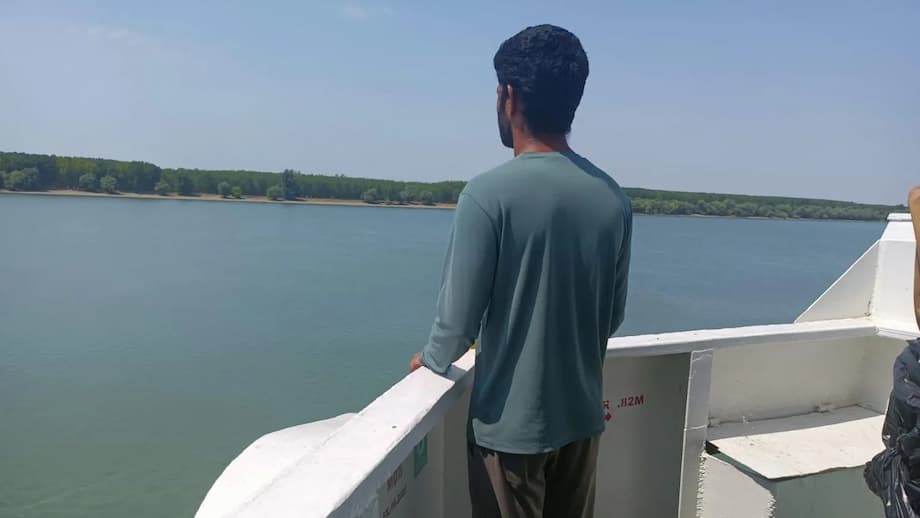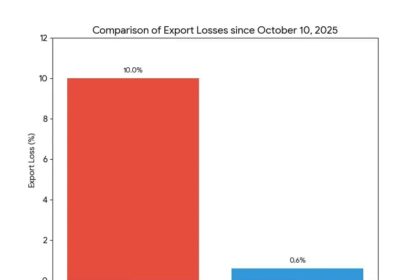India’s Seafarers: Stranded at Sea in a Global Crisis
In 2024, the world’s shipping industry faced a humanitarian crisis of unprecedented scale: the abandonment of seafarers by shipowners surged to record highs. At the center of this tragedy are Indian sailors, who, for the second consecutive year, topped the global list of abandoned crew members. Behind the statistics are stories of hardship, dashed hopes, and a system that too often leaves workers isolated, unpaid, and forgotten on the world’s oceans.
- India’s Seafarers: Stranded at Sea in a Global Crisis
- What Does “Abandonment” Mean for Seafarers?
- Personal Stories: Life Aboard Abandoned Ships
- Why Are Indian Seafarers So Vulnerable?
- The Scale of the Crisis: Record Numbers and Financial Impact
- Flags of Convenience: The Legal Loophole at the Heart of the Problem
- The Human Cost: Psychological and Economic Toll
- Why Is This Happening Now? Systemic Failures and Global Trends
- Efforts to Address the Crisis: What Is Being Done?
- Broader Implications: The Hidden Cost of Global Trade
- In Summary
What Does “Abandonment” Mean for Seafarers?
Abandonment, as defined by the Maritime Labour Convention (MLC) 2006, occurs when a shipowner fails to cover the cost of repatriation, does not provide necessary maintenance and support, or withholds contractual wages for at least two months. In practical terms, this means seafarers are left stranded on vessels, often in foreign ports, without pay, food, water, or a way home. The International Maritime Organization (IMO) and International Labour Organization (ILO) maintain a joint database to track these cases, but the numbers only hint at the true scale of the suffering.
In 2024, the International Transport Workers’ Federation (ITF) reported 3,133 abandoned seafarers worldwide—a staggering 87% increase from the previous year. Of these, 899 were Indian nationals, making up nearly 29% of all cases. The crisis is not just about numbers; it is about lives put on hold, families thrown into financial distress, and workers left in legal and physical limbo.
Personal Stories: Life Aboard Abandoned Ships
Behind every statistic is a human story. Manas Kumar, an Indian chief officer, has been stranded on the cargo ship Anka in Ukrainian waters since April. The vessel, raided by Ukrainian authorities on suspicion of being part of Russia’s shadow fleet, left Kumar and his multinational crew in a bureaucratic no-man’s-land. Although told they were free to leave, the crew hesitated—disembarking would mean forfeiting more than $100,000 in unpaid wages collectively owed to them. “This is a war zone. All we want is to return home quickly,” Kumar told the BBC.
Another case is that of Captain Amitabh Chaudhary, who, along with nine Indian and one Iraqi crew member, was stranded for nearly six months on the Tanzania-flagged Stratos after it struck rocks near Saudi Arabia’s Jubail port. The ship’s owner refused to pay their salaries, citing financial losses. The crew’s ordeal included hunger, fear of sinking, and the psychological toll of uncertainty. “The mind has stopped working, can’t think what more we should do. Can we get some help? We just want to go home and meet our loved ones,” Chaudhary pleaded.
These are not isolated incidents. In the Gulf, the crew of the Nirvana, an Indian-owned, Curacao-flagged oil tanker, faced similar hardships—no food, no fuel, and no pay—while awaiting a court-ordered settlement that, months later, still had not delivered their wages.
Why Are Indian Seafarers So Vulnerable?
India is the world’s second-largest supplier of commercial ship crew, with tens of thousands of its citizens working on vessels across the globe. Yet, Indian seafarers are consistently the most abandoned. Several factors contribute to their vulnerability:
- Desperation for Jobs: Many Indian seafarers pay hefty fees to recruitment agents or for training certifications, leaving them financially exposed and desperate to recover their investment through wages.
- Lack of Awareness: Some crew members are unaware of the risks or the actual conditions on board, and may not know which ship they are joining until the last minute.
- Flags of Convenience: The majority of abandoned vessels operate under so-called “flags of convenience”—registries in countries with weak regulations, such as Panama, Palau, Tanzania, and Comoros. These flags allow shipowners to obscure their identity, evade labor laws, and avoid accountability.
- Complex Ownership Structures: Ships are often owned, managed, and crewed by entities in different countries, making it difficult to determine who is responsible when things go wrong.
According to the ITF, 90% of abandoned vessels in 2024 sailed under a flag of convenience. This system, originally designed to facilitate global trade, has become a shield for unscrupulous owners seeking to cut costs at the expense of crew welfare.
The Scale of the Crisis: Record Numbers and Financial Impact
The numbers from 2024 are sobering:
- 3,133 seafarers abandoned globally (up from 1,676 in 2023)
- 899 Indian seafarers abandoned (the highest of any nationality)
- 312 vessels abandoned (a 136% increase from 2023)
- Over $20 million in unpaid wages owed to seafarers, with only about half recovered so far
- The United Arab Emirates (UAE) was the leading port state for abandonments, with 42 cases, followed by Türkiye
Steve Trowsdale, ITF Global Inspectorate Coordinator, described the situation as “an absolute disgrace,” blaming unscrupulous shipowners and a lack of action from governments and international regulators. The ITF’s report to the IMO highlights the systemic failures that allow abandonment to persist, including lack of enforcement, insufficient insurance, and the refusal of shipowners to accept responsibility.
Flags of Convenience: The Legal Loophole at the Heart of the Problem
The practice of registering ships under foreign flags—often from countries with minimal oversight—has exploded in recent decades. Known as “flags of convenience” (FOC), this system allows shipowners to:
- Evade labor and safety regulations
- Reduce operating costs
- Obscure true ownership and responsibility
In 2024, 81% to 90% of abandoned vessels sailed under FOCs. Panama led with 43 cases, followed by Palau, Tanzania, Comoros, Cameroon, and Bahrain. Some vessels had no identifiable flag at all, further complicating legal recourse for stranded crews.
ITF President Paddy Crumlin criticized the business model:
“The business case is based on registering in countries where there is no accountability and no regulation. There are cases of abandonment, death, exploitation, and failure to pay wages. FOC countries don’t have the capacity to regulate, and all they want to do is attract revenues.”
The Human Cost: Psychological and Economic Toll
For the abandoned seafarers, the consequences are devastating. Many are the primary breadwinners for their families. When wages go unpaid, families back home fall into debt, children are pulled from school, and basic needs go unmet. The psychological toll is severe: anxiety, depression, and post-traumatic stress are common, especially for those stranded for months or years.
Some seafarers, like Sanjay (name changed), have been stuck on vessels for over two years, working without pay and selling family heirlooms to survive. Others, like the crew of the Sunshine 7 in the UAE, endured extreme heat, lack of food, and no air conditioning for over 20 months. In the worst cases, despair leads to suicide attempts.
Legal limbo, visa restrictions, and documentation issues often trap seafarers on vessels long after their contracts end. Even when courts order settlements or repatriation, payments can be delayed or never materialize.
Why Is This Happening Now? Systemic Failures and Global Trends
The surge in abandonment cases is the result of several converging factors:
- Economic Pressures: Global shipping is fiercely competitive, with owners seeking to cut costs wherever possible. When financial trouble strikes, abandoning a vessel can be cheaper than fulfilling contractual obligations.
- Weak Enforcement: International conventions like the MLC 2006 provide a framework for seafarer welfare, but enforcement is inconsistent. Port states may lack resources or the will to intervene, and flag states often prioritize revenue over regulation.
- Opaque Ownership: Complex corporate structures and shell companies make it difficult to hold anyone accountable.
- COVID-19 Pandemic: The pandemic exacerbated crew change difficulties, leading to additional cases of abandonment as ships were stuck in port or unable to rotate crews.
According to Rear Admiral Sanjay Roye (Retd.), writing for the EurAsian Times, “Systemic failures and weak enforcement of international regulations exacerbate the crisis. The shipping industry operates through Flags of Convenience, substandard labor practices, and weak regulatory enforcement.”
Efforts to Address the Crisis: What Is Being Done?
International organizations, unions, and NGOs are working to address the crisis, but progress is slow. The IMO and ILO have strengthened guidelines and require compulsory insurance for shipowners to cover abandonment and related claims. The ITF operates a network of inspectors in 120 ports worldwide, responding to distress calls and working to recover unpaid wages and repatriate crews.
However, enforcement remains a challenge. As Stephen Cotton, ITF General Secretary, put it:
“The rise in abandonment exposes exploitative practices and lack of global regulation. The solution is clear: better regulation, enforcement, and accountability from governments.”
Some countries, like India, are being urged to improve oversight of recruitment agencies and ship vetting. The Directorate General of Shipping, India’s maritime regulator, has faced criticism for lax scrutiny, but also notes that seafarers must be vigilant about contract discrepancies before signing on.
Broader Implications: The Hidden Cost of Global Trade
Over 80% of world trade by volume is carried by sea. The goods that fill store shelves and fuel economies depend on the labor of seafarers. Yet, the crisis of abandonment exposes a dark underbelly of the global supply chain—one where workers are treated as disposable, and legal loopholes allow exploitation to flourish.
As the shipping industry continues to grow, so too does the urgency of reform. Without decisive action, abandonment will remain a stain on the maritime sector, undermining the very foundations of global commerce.
In Summary
- 2024 saw a record 3,133 seafarers abandoned worldwide, with Indian nationals making up the largest group (899 cases).
- Abandonment leaves crew members stranded without pay, provisions, or a way home—sometimes for months or years.
- The widespread use of “flags of convenience” allows shipowners to evade responsibility and exploit weak regulations.
- Economic desperation, lack of awareness, and complex ownership structures make Indian seafarers particularly vulnerable.
- International organizations and unions are working to address the crisis, but enforcement and accountability remain major challenges.
- The crisis highlights the hidden human cost of global trade and the urgent need for reform in the shipping industry.












